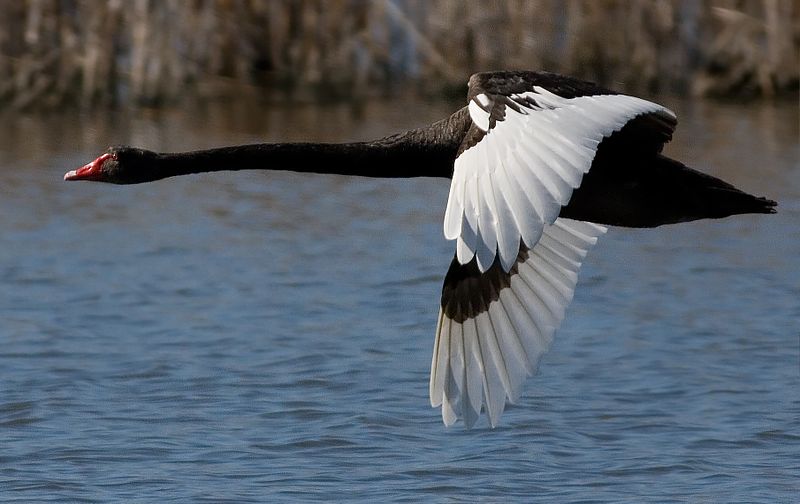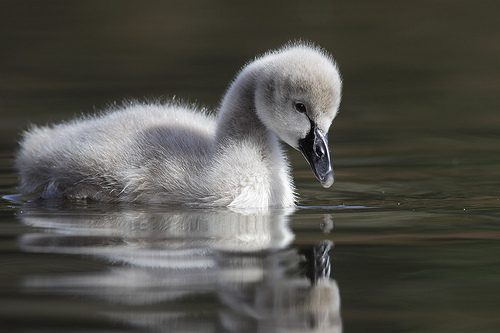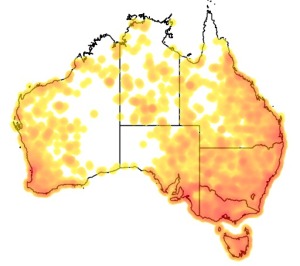Colours
Distinguishing features
Black Swans are mostly black-feathered birds, with white flight feathers. The bill is bright red, with a pale bar and tip; and legs and feet are greyish-black. Cobs (males) are slightly larger than pens (females), with a longer and straighter bill. Cygnets (immature birds) are a greyish-brown with pale-edged feathers. (Wikipedia)
Size
- From 110 cm to 142 cm (Length of specimen) - applies to Mature birds
Weight
- From 3.7 kg to 9 kg
Wingspan
- From 160 cm to 200 cm
Synonyms
Distribution
Distribution and habitat preferences
It is common in the wetlands of south western and eastern Australia and adjacent coastal islands. In the south west the range ecompasses an area between North West Cape, Cape Leeuwin and Eucla; while in the east it covers are large region bounded by the Atherton Tableland, the Eyre Peninsula and Tasmania, with the Murray Darling Basin supporting very large populations of Black Swans. It is uncommon in central and northern Australia.
The Black Swan's preferred habitat extends across fresh, brackish and salt water lakes, swamps and rivers with underwater and emergent vegetation for food and nesting materials. Permanent wetlands are preferred, including ornamental lakes, but Black Swans can also be found in flooded pastures and tidal mudflats, and occasionally on the open sea near islands or the shore.
Black Swans were once thought to be sedentary, but the species is now known to be highly nomadic. There is no set migratory pattern, but rather opportunistic responses to either rainfall or drought. In high rainfall years, emigration occurs from the south west and south east into the interior, with a reverse migration to these heartlands in drier years. When rain does fall in the arid central regions, Black Swans will migrate to these areas to nest and raise their young. However, should dry conditions return before the young have been raised, the adult birds will abandon the nests and their eggs or cygnets and return to wetter areas. (Wikipedia)
Diet
It is almost exclusively herbivorous, and while there is some regional and seasonal variation, the diet is generally dominated by aquatic and marshland plants. (Wikipedia)
Web resources
References
- Simpson, K., N. Day and P. Trusler (2004). Field Guide to Birds of Australia: 7th Edition Penguin Group (Australia), Camberwell, Victoria.



